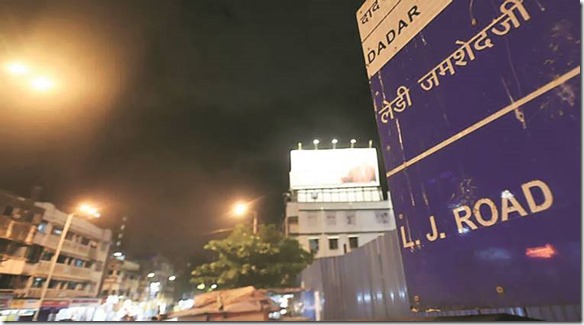While the government struggled to collect funds to construct a causeway for better connectivity in the island city, one Parsi family took it upon itself to construct the Mahim Causeway.
Before 1845, getting to Bandra from Mahim was nothing like what it is today. The lack of any land route meant taking a ferry between the two points. The situation would get worse during monsoons, with many losing life during the sail.
While the government struggled to collect funds to construct a causeway for better connectivity in the island city, one Parsi family took it upon itself to construct the Mahim Causeway. Today, one of the roads — Lady Jamsetjee Road — along the causeway is the only reminder of this important contribution made by Avabai Jamsetjee and her family to the city.
Avabai’s husband Sir Jamsetjee Jeejeebhoy was the first Baronet and a very successful Parsi businessman. While the then British government wanted to build a causeway and sought funding through public subscription, it was unable to realise the plan, leading to Jamsetjee Jejeeebhoy and his family meeting the cost. Lady Jamsetjee, however, laid one condition for the funding — residents of the city should not be burdened with toll.
The reason for taking on this construction by the family was owing to a disaster that struck in 1841 when 15-20 boats capsized while crossing the creek, resulting in several lives being lost. “When news of this tragedy reached Lady Jamsetjee, she expressed her desire to bear the cost of building a causeway linking Mahim and Bandra. Jamsetjee wrote to the government expressing his wife’s offer to donate Rs 1,00,000 towards the construction of the causeway to ease the journey from reaching the island of Salsette from Bombay,” said Sir Jamsetjee Jejeeebhoy, the 8th Baronet and the successor to Sir Jeejeebhoy’s baronetcy.
“Since the estimate provided by the government was found to be exorbitant, Jamsetjee asked the government to invite tenders for this work. Finally, the tender submitted by one Jamsetjee Dorabjee Naigaumwala was accepted and he undertook to complete the causeway in two and a half years. Construction began in 1843. Later, the authorities realised the estimate had fallen short and the government approached Lady Jamsetjee again, who donated another Rs 40,000 on condition that no toll would be collected for the use of the causeway,” said the 8th Baronet.
The construction was completed on April 8, 1845. “At the inauguration, Lady Avabai agreed to donate another Rs 22,000 to build an approach road from Mahim bazaar to the causeway. The road was opened in 1848 and bears the name Lady Jamsetjee Road even today,” he added.“There is also a legend attached to the construction of the causeway,” said Sir Jeejeebhoy.
None of the two daughters born to Avabai survived beyond their infancy. She had three sons but wanted a daughter and sought to make a wish before Our Lady of the Mount that if she were blessed with a daughter who survived till the age of seven years, she would repay her debt of gratitude to Virgin Mary.
“In 1834, Avabai gave birth to a girl named Pirojbai, and as the years went by Avabai kept renewing the vow she had made, until Pirojbai attained the age of seven. Avabai fulfilled her vow by deciding to contribute towards the causeway around the time the major accident took place. The parents also gifted a pearl necklace and earrings to adorn the statue of Virgin Mary,” said Sir Jeejeebhoy.
The family is also believed to have funded the steps leading to the shrine.“She was a very private person. She ensured that her daughter got the same education as her sons,” he added.
“Avabai was the daughter of Framji Nusserwanji Battliwala, who sold bottles in the Fort area. Jamsetjee was Avabai’s cousin who used to work with her father. Jamsetjee over the years became a successful businessman through his voyages to China. The Causeway was constructed out of compassion for the fishermen who lost their lives while crossing the creek,” said research scholar Nawaz Mody.
In recognition of these services, Jamsetjee was conferred a knighthood in 1842 and Avabai become Lady Jeejeebhoy. Subsequently, in 1857, a baronetcy was conferred upon Jamsetjee.

